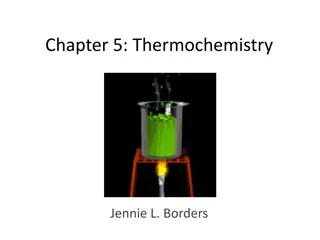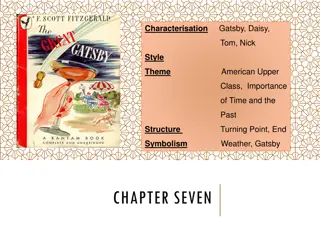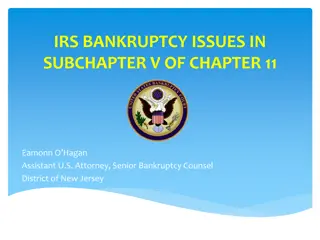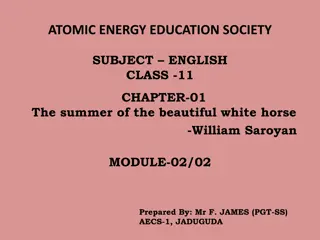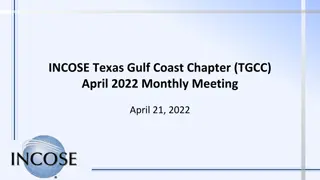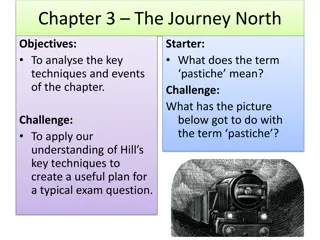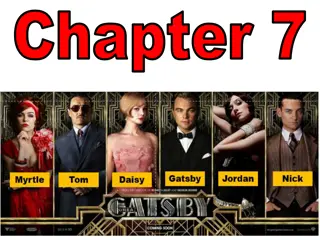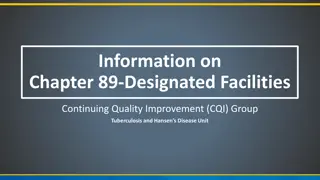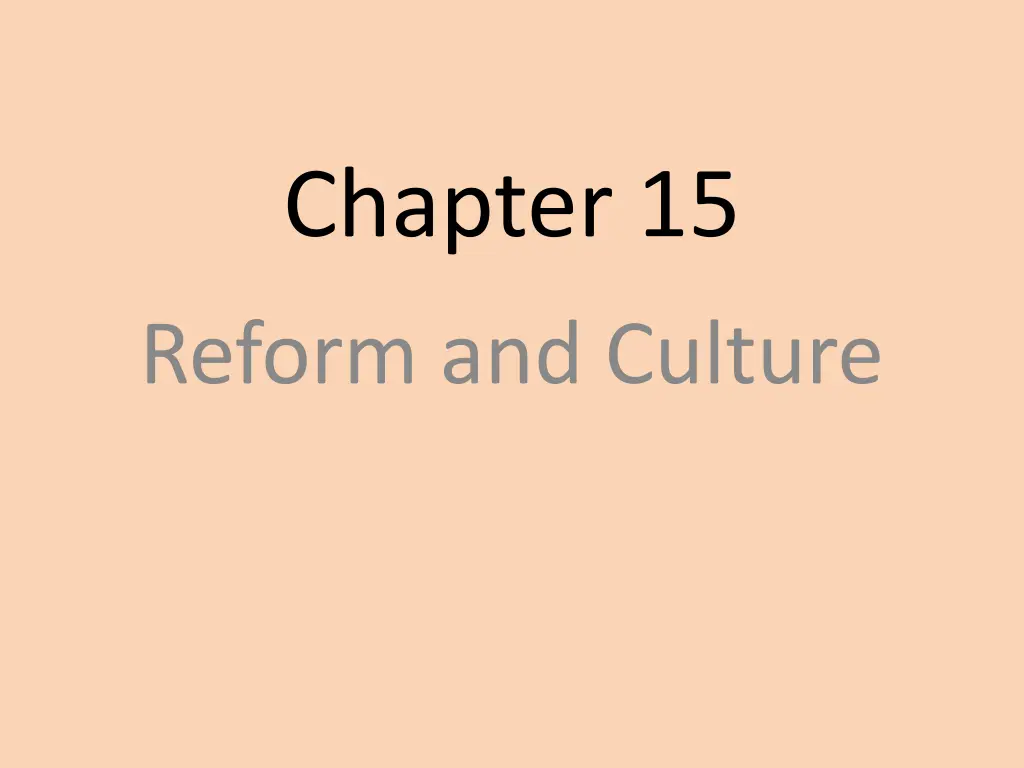
Reform, Culture, and Religious Movements in America
Explore the religious reforms and cultural movements in America during the 19th century, including Deism, the Second Great Awakening, denominational splits, and the rise of Mormonism under Joseph Smith and Brigham Young. Discover how these movements shaped American society and religious practices.
Download Presentation

Please find below an Image/Link to download the presentation.
The content on the website is provided AS IS for your information and personal use only. It may not be sold, licensed, or shared on other websites without obtaining consent from the author. If you encounter any issues during the download, it is possible that the publisher has removed the file from their server.
You are allowed to download the files provided on this website for personal or commercial use, subject to the condition that they are used lawfully. All files are the property of their respective owners.
The content on the website is provided AS IS for your information and personal use only. It may not be sold, licensed, or shared on other websites without obtaining consent from the author.
E N D
Presentation Transcript
Chapter 15 Reform and Culture
Many Americans practiced Deism (reason rather revelation) Rejected original sin of man Denied Christ s divinity but believed in a supreme being that created universe with an order, similar to a clockmaker. Unitarian faith begins (New England) believed God existed in only 1 person, not in the orthodox trinity; stressed goodness of human nature believed in free will and salvation through good works; pictured God as a loving father appealed to intellectuals with rationalism and optimism These perversions of Christianity ignited Christians to take back their faith and oppose these new beliefs
The Second Great Awakening Liberalism in religion started in 1800 Spawned the 2nd Great Awakening - spiritual fervor that resulted in prison reform, church reform, temperance movement (no alcohol), women s rights movement, abolition of slavery in 1830s Spread to the masses through huge camp meetings East went to the West to Christianize Indians Methodists and Baptists stressed personal conversion, democracy in church affairs, emotionalism Peter Cartwright was best known of the circuit riders or traveling preachers Charles Grandison Finney the greatest revival preacher who led massive revivals in Rochester, NY
Denominations The revival caused the further split of Christians into denominations New York, with its Puritans, preached hellfire and was known as the Burned-Over District Millerites (Adventists) predicted Christ to return to earth on Oct 22, 1844. When this prophesy failed to materialize, the movement lost credibility. Widened lines between classes the region (like 1st Great Awakening) Conservatives were made up of: propertied Episcopalians, Presbyterians, Congregationalists, Unitarians the less-learned of the South the West (frontier areas) were usually Methodists or Baptists Religion further split with the issue of slavery (i.e. the Methodists and Presbyterians split)
The Mormons Joseph Smith (1830) claimed to have found golden tablets in NY with the Book of Mormon inscribed on them. He started the Mormon (or Church of Jesus Christ of Latter Day Saints ) Church People didn t like Mormons because of their polygamy, drilling militia, and voting as a unit
Young Takes Over Smith was killed, but was succeeded by Brigham Young, who led followers to Utah They grew quickly by birth and immigration from Europe They had a federal governor and marched to Utah when Young became governor The issue of polygamy prevented Utah s entrance to U.S. until 1896
Primary Schools The idea of tax-supported, compulsory (mandatory), primary schools was opposed as a hand-out to paupers Gradually, support rose because uneducated brats might grow up to be rabbles with voting rights Free public education, triumphed in 1828 along with the voting power in the Jackson election there were largely ill-taught and ill-trained teachers, however Horace Mann fought for better schools and is the Father of Public Education school was too expensive for many community; blacks were mostly left out from education Important educators - Noah Webster (dictionary and Blueback Speller); William H. McGuffey McGuffey s Readers)
Secondary Schools The 2nd Great Awakening led to the building of small schools in the South the West (mainly for pride) the curriculum focused mainly on Latin, Greek, Math, moral philosophy The 1st state-supported university was founded in the Tar Heel state, the Univ. of North Carolina, in 1795; Jefferson started the University of Virginia shortly afterwards (UVA was to be independent of religion or politics) women were thought to be corrupted if too educated and were therefore excluded Emma Willard established Troy Female Seminary (1821) and Mount Holyoke Seminary (1837) was established by Mary Lyon Libraries, public lectures, and magazines flourished
Reformers reformers opposed tobacco, alcohol, profanity, and many other vices, and came out for women s rights women were very important in motivating these reform movements reformers were often optimists who sought a perfect society some were na ve and ignored the problems of factories they fought for no imprisonment for debt (the poor were sometimes locked in jail for less than $1 debt); this was gradually abolished reformers wanted criminal codes softened and reformatories created the mentally insane were treated badly. Dorothea Dix fought for reform of the mentally insane in her classic petition of 1843 there was agitation for peace (i.e. the American Peace Society) - William Ladd had some impact until Civil War and Crimean war
Temperance Movement Drunkenness was widespread The American Temperance Society was formed at Boston (1826) the Cold Water Army (children), signed pledges, made pamphlets, and an anti-alcohol novel emerged called 10 nights in a Barroom and What I Saw There Attack on the demon drink adopted 2 major lines attack stressed temperance (individual will to resist) legislature-removed temptation - Neal S. Dow becomes the Father of Prohibition sponsored Maine Law of 1851 which prohibited making and sale of liquor (followed by others)
Women stayed home, without voting rights. American women were generally better off than in Europe. Many women avoided marriage altogether becoming spinsters Gender differences increased sharply with different economic roles Women were perceived as weak physically and emotionally, but fine for teaching Men were perceived as strong, but crude and barbaric, if not guided by the purity of women Home was the center of the female s world (even for reformer Catharine Beecher) but many felt that was not enough They joined the movement to abolish of slavery The women s movement was led by Lucretia Mott, Susan B. Anthony, Elizabeth Candy Stanton, Dr. Elizabeth Blackwell (1st female medical graduate), Margaret Fuller, the Grimke sisters (anti-slavery advocates), and Amelia Bloomer (semi-short skirts)
Seneca Falls Womens Rights Conference (1848) Held in NY, it was a major landmark in women s rights Issued the Declaration of Sentiments was written in the spirit of the Declaration of Independence saying that all Men and Women are created equal demanded ballot for women launched modern women s rights movement The women s rights movement was temporarily eclipsed by slavery when the Civil War heated up, but served as a foundation for later days
Robert Owen founded New Harmony, IN (1825) though it failed in confusion Brook Farm Massachusetts experiment (1841) where 20 intellectuals committed to Transcendentalism (it lasted until 1846) Oneida Community practiced free love, birth control, eugenic selection of parents to produce superior offspring; it survived ironically as a capitalistic venture, selling baskets and then cutlery. Shakers a communistic community (led by Mother Ann Lee); they couldn t marry so they became extinct
Early Americans were interested in practical science rather than pure science (i.e., Jefferson and his newly designed plow). Nathaniel Bowditch studied practical navigation and oceanography Matthew Maury - ocean winds, currents Writers were concerned with basic science. The most influential U.S. scientists Benjamin Silliman (1779-1864) - pioneer in chemistry geologist (taught in Yale) Louis Agassiz (1807-1873) - served at Harvard, insisted on original research Asa Gray (1810-1888) Harvard, was the Columbus of botany John Audubon (1785-1851) painted birds with exact detail Medicine in the U.S. was primitive (i.e., bleeding used for cure; smallpox, yellow fever though it killed many). Life expectancy was unsurprisingly low. Self-prescribed patent medicines were common, they were usually were mostly alcohol and often as harmful as helpful. The local surgeon was usually the local barber or butcher.
Literature was reborn after the War of Independence and especially after War of 1812 The Knickerbocker group in NY wrote the first truly American literature Washington Irving (1783-1859) - 1st U.S. internationally recognized writings, The Sketch Book James Fenimore Cooper (1789-1851) - 1st US novelist, Leatherstocking Tales (which included The Last of the Mohicans which was popular in Europe) William Cullen Bryant (1794-1878) Thanatopsis, the 1st high quality poetry in U.S.
Authors Henry Wadsworth Longfellow - wrote poems popular in Europe such as Evangeline John Greenleaf Whittier - poems that cried against injustice, intolerance, inhumanity James Russell Lowell - political satirist who wrote Biglow Papers Oliver Wendell Holmes - The Last Leaf Women writers Louisa May Alcott - with transcendentalism wrote Little Women Emily Dickinson wrote of the theme of nature in poems Southern literary figure William Gillmore Simms - the cooper of the south ; wrote many books of life in frontier South during the Revolutionary War
Edgar Allen Poe wrote The Raven and many short stories invented modern detective novel and psychological thriller he was fascinated by the supernatural and reflected a morbid sensibility (more prized by Europe)
Nathaniel Hawthorne The Scarlet Letter (psychological effect of sin) Showed his Puritan origins
Herman Melville Moby Dick, and allegory between good and evil told of a whaling captain
Transcendentalism Literature dawned in the 2nd quarter of 19th century with the transcendentalist movement (circa 1830) transcendentalism clashed with John Locke (who argued knowledge came from reason); for transcendentalists, truth came not by observation alone, from with inner light it stressed individualism, self-reliance, and non- conformity
Ralph Waldo Emerson Was popular since the ideal of the essay reflected the spirit of the U.S. He lectured the Phi Beta Kappa Address The American Scholar He urged U.S. writers throw off European tradition influential as practical philosopher (stressed self- government, self-reliance, depending on self) Most famous for his work, Self Reliance
Henry David Thoreau He condemned slavery and wrote Walden: Or life in the Woods He also wrote On the Duty of Civil Disobedience, which was idealistic in thought, and a forerunner of Gandhi and then Martin Luther King Jr., saying it is not wrong to disobey a wrong law
Walt Whitman wrote Leaves of Grass (poetry) Was Poet Laureate of Democracy
Historians George Bancroft founded the naval academy; published U.S. history book and was known as the Father of American History William H. Prescott - published on the conquest of Mexico, Peru Francis Parkman - published on the struggle between France and England in colonial North America Historians were all from New England because they had the most books. Therefore, there became an anti-South bias.





